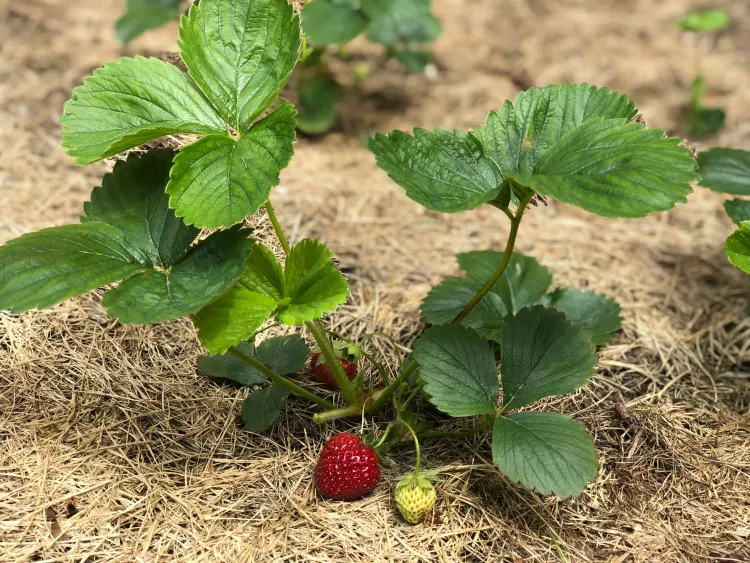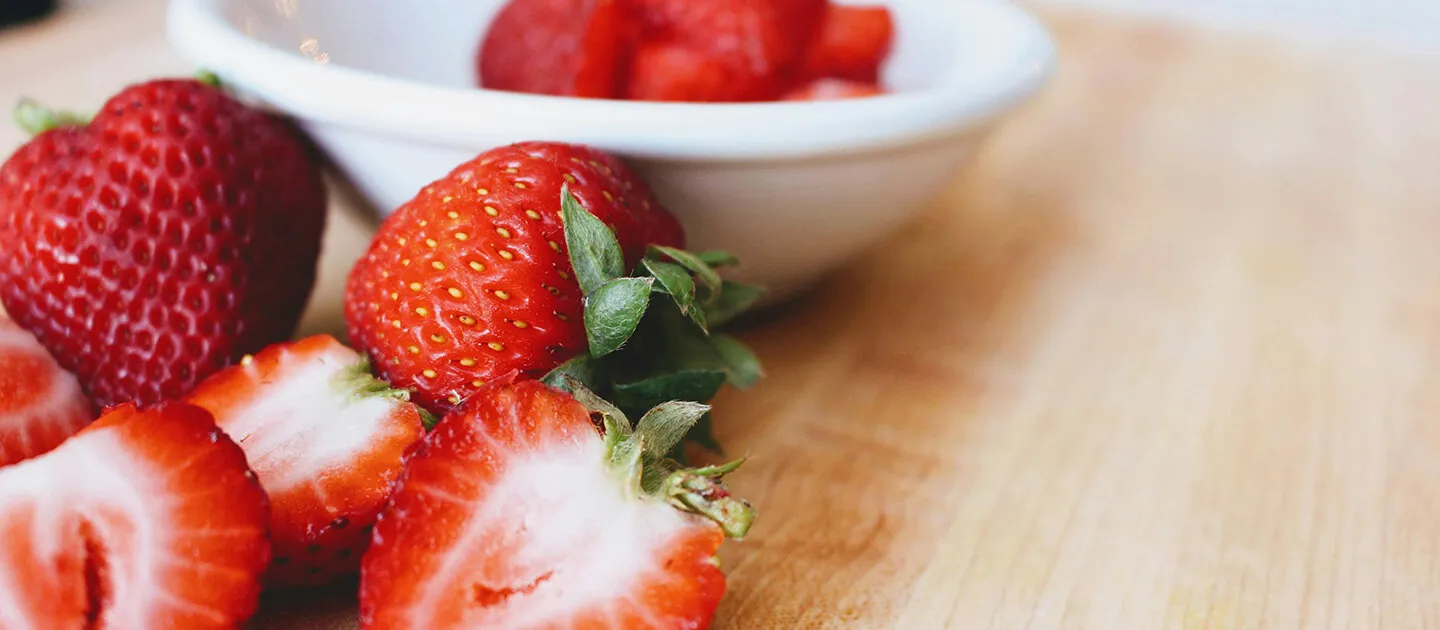If seeing strawberries at farmers markets and roadside stands starts you dreaming about harvesting this sweet, juicy fruit in your own back yard, why not give it a try?
Strawberries (Fragaria × ananassa) are a perennial fruit hardy in United States Department of Agriculture Hardness Zones 3 to 9, depending on the variety. If you’re located in Zone 4 or colder, mulching or other protection against winter cold is advisable.
A strawberry plant is about 12 inches high and 24 inches wide when mature. They commonly spread through above-ground runners (called stolons) that root and produce new plants.

To grow your own strawberries, you’ll need a sunny location—at least six hours of direct sun daily. Insufficient light can result in slow growth and lack of fruit. If you don’t have a garden spot that will provide full sun, consider growing strawberries in a container that you can put in a suitable place.
For the best results, choose a location with rich, fertile soil that drains well. Adding a layer of mulch to a strawberry bed can help retain moisture, prevent weeds and regulate soil temperature.
A soil test will tell you about your soil’s pH, available nutrients, micronutrients and more. It will also recommend the type of fertilizer that will benefit the plants you’re growing. For more information, see https://go.uvm.edu/soiltest.
There are different types of strawberries to choose from that will produce berries at different times during the growing season. Within those types are numerous varieties. Which you choose will help determine the size, sweetness and other qualities of the strawberries you grow.
June-bearing varieties send out runners in the spring as daylight hours increase. They bear one large crop each year in June.
Everbearing varieties bear fruit when there is at least 12 hours of daylight and continue to do so throughout the season until summer’s end. Day-neutral varieties will produce berries in June, again in July, and once again in August.
The best times to plant strawberries are in the spring/early summer or in the fall. Avoid planting in excessive heat.

Strawberries can be purchased as single plants ready for the garden or in bundles of bare roots. Starter plants can be transplanted into the garden following a period of acclimation. Keep the crown at soil surface level when planting and water in well. For more information on transferring plants to the garden, see https://go.uvm.edu/starters.
If you purchase bare-root plants, they’ll appear lifeless, but they’re actually dormant. The bundled roots should be separated and soaked in water for about an hour. Remove any dead leaves and plant with the crown level at the soil’s surface in either the garden or in pots. Be sure to water well. Before long, new growth will appear.
If you want to grow stronger, better-producing plants, remove the flowers from June-bearing varieties during the first year. For everbearing and day-neutral varieties, remove all flowers early in the season, but you can let subsequent flowers remain for a late-season harvest. This enables the plants’ energy to be focused on growth rather than fruit production early on.
In the fall, leaves can be mowed or cut back. Mulch well in late fall to protect strawberries’ shallow roots during the winter.
If you find yourself trying to identify a pest or disease affecting your strawberries, or if you have questions about growing them or home gardening in general, contact the University of Vermont Extension Master Gardeners Helpline by phone at (802) 656-5421 (Thursdays, 9 a.m. to 12 p.m. from April to October) or online year-round at https://go.uvm.edu/gardeninghelp.
